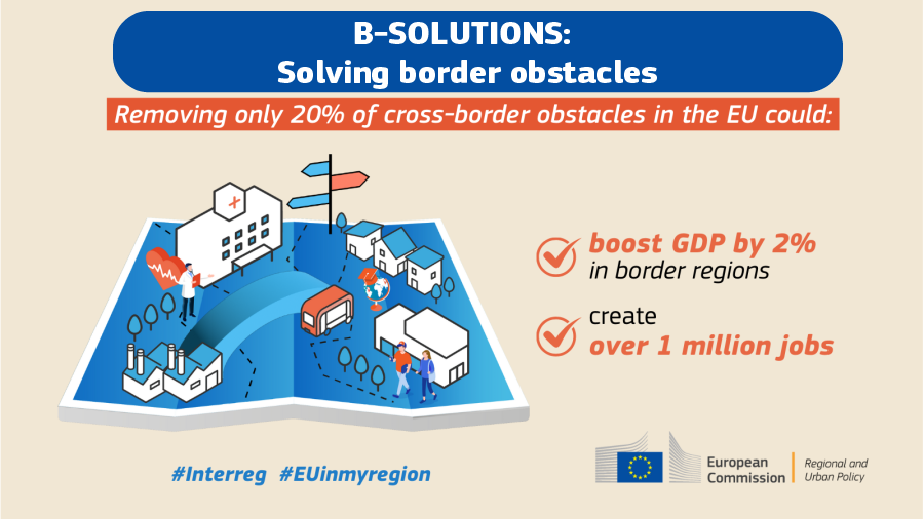B solutions: solving border obstacles
- 15 May 2024

One-third of the EU’s population lives in border regions, which constitute 40 % of the total EU territory. Although these regions play a significant role in EU integration, their residents often face administrative barriers when commuting, working, or using public services across the border.
‘Getting access to jobs, to public services, are areas in which we see that citizens living in border regions are in worse positions than those not in border regions, because this element of natural territory is hampered,’ Ricardo Ferreira, of the European Commission’s Directorate-General for Regional and Urban Policy (DG REGIO) told on a Regio Waves podcast episode entitled ‘Border regions: the final frontier of cooperation’.
He cited a study by the Politecnico di Milano, according to which removing 20 % of the current legal and administrative obstacles would boost GDP in cross-border regions by 2 % and create over one million jobs.
From barriers to opportunities
For this reason, the European Commission is exploring how borders can be turned from barriers into opportunities. The 2021 report entitled EU Border Regions: Living labs of European integration highlights the success of B-solutions, an initiative launched in 2018. It is promoted by DG REGIO and managed by the Association of European Border Regions.
With B-solutions, entities and public bodies facing a cross-border legal or administrative obstacle submit their case in a call for proposals. Those that are selected receive help from the European Commission to identify the causes of the obstacle and find solutions with the help of legal experts.
The second step involves additional support to implement solutions. The competent authorities discuss the feasibility of the solution and cooperate towards its implementation.
Since its inception, B-solutions has built a database of approximately 150 cases – both concluded and ongoing. This represents a valuable resource for stakeholders, policy makers and other actors seeking to overcome their own cross-border challenges.
Explore the B-solutions library
Some of these case studies have been published online as videos and as three compendiums and two booklets.
The videos are narrated by the local experts who provide a short introduction to their case, the obstacles they faced and the solutions that were found. See them on EUinmyregion’s YouTube channel.
The compendiums and booklets can be found in the B-solutions library.
The first compendium of 43 cases was published in 2020. The second one presents lessons learnt from 47 cases between 2020-2021 in four areas: institutional cooperation, cross-border public services, employment, and education, and green. The third compendium, 2022-2023, outlines 41 cases.
The first illustrated storytelling booklet (2021) has seven stories, including about the woodworking sector in Norway and Sweden, obstacles facing young graduates in Spain and France, and the ‘impossible dream’ of the trilateral bridge in the Czechia, Poland and Germany region.
The second booklet, published in February this year, outlines nine cases with themes ranging from healthcare and energy production to water tourism.
All these stories highlight the importance of promoting cohesion across EU borders and the innovative solutions that can transform borders into dynamic hubs of European integration.
As emphasized by Themis Christophidou, Director-General for Regional and Urban Policy of the European Commission, in the last booklet featured above: “These stories are not just anecdotes; they contribute to overcoming border blindness by spotlighting various cross-border experiences in the European Union. As such, they serve as unique sources of data and knowledge for better policies and for EU integration, working seamlessly across the borders.”


